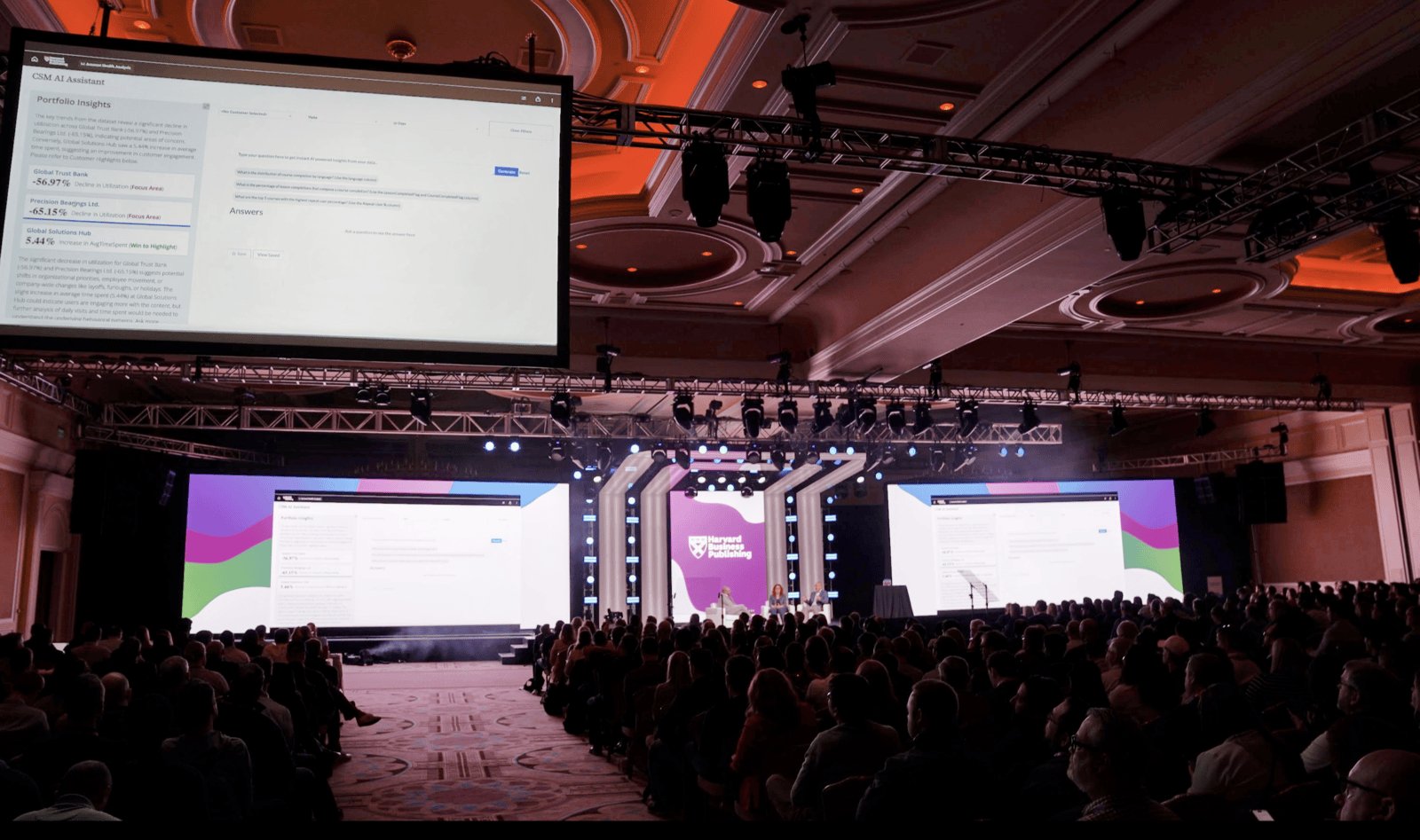

““I've been in the tech business for a long time, and this is probably the most exciting thing to happen ever.” - Aman Tiwari, Amazon Web Services
Last week, Domo welcomed executives from across the country at the Domopalooza AI & Data Conference 2025 at the Grand America and Little America in Salt Lake City. Alongside general sessions, Domo facilitated expert-led breakout discussions on emerging technologies.
Cody Irwin, Head of Data Partners at Domo, hosted a discussion with Aman Tiwari and Nick Simha from Amazon Web Services (AWS) on the evolution and potential of Agentic AI.
“Agentic AI will drive more efficiency than we've ever seen before,” said Irwin. “I think we're on the precipice of a shift comparable to the printing press, the Industrial Revolution, or the rise of the internet and mobile technology.”
Domo invited AWS experts to demystify Agentic AI’s capabilities. Aman Tiwari, a solutions architect at AWS, explained:
“An agent works by receiving a task and breaking it down. Traditionally, software development involves writing explicit instructions in code. Agentic AI, however, allows users to define objectives while the system determines execution.”
Tiwari noted that a significant portion of software development involves fixing outdated code. “Business conditions change, but traditional software must be continuously updated,” he explained. “With Agentic AI, businesses can adapt more dynamically.”

The Transformative Potential and Challenges
According to business experts, Agentic AI has the potential to transform workflows by automating complex processes through multi-agent systems.
“The Agentic approach is different. You simply specify the desired outcome, and the system orchestrates the process,” said Tiwari. “That’s why it’s generating so much excitement.”
However, despite its promise, there are risks. The reliance on AI decision-making introduces concerns about system reliability, ethical considerations, and transparency in automated processes. Additionally, businesses must consider the cost and complexity of integrating Agentic AI into existing infrastructure.
“How an agent works? You give it a task, it breaks it down,” explained Aman Tiwart, solutions architect at Amazon.
“Traditionally, you declare a set of roles, using whatever programming language, then you execute it, and it follows that same set of instructions.”
“You'll see a lot of hard coding being done on, and you have to go back and fix your code. I mean, most of the effort done in software development today is fixing old code, right? That's why businesses are not agile, because business conditions change, but your software… still has to get upgraded.”
“The Agentic approach is very different. You just tell it what you want done, and it all happens. That’s why everybody's so excited about it,” said Aman Tiwari.
“I've been in the tech business for a long time, and this is probably the most exciting thing to happen ever.”
“If you don't have to write those rules, then anybody can write these programs.”
Agentic AI in Practice: Insights from Inform Data
Another breakout session featured Marcus Wilkins, Lead Data Scientist at Inform Data, a company specializing in handling sensitive consumer information. Wilkins explained how to build workflows that incorporate multiple AI agents alongside conventional coding.
He defined chatbots as virtual assistants leveraging machine learning and natural language processing (NLP) to simulate human conversations. However, he highlighted their limitations:
“Traditional chatbots often fail when encountering business-specific terminology, especially if presented with slang or poor grammar. They lack adaptability unless they function as agentic systems.”
Wilkins emphasized that an agentic workflow operates beyond one-time transactions. “It’s like having a team of personal assistants that execute tasks in a logical sequence, refining their output dynamically rather than just responding to a single prompt,” he explained.

What makes an agentic workflow, why is it better than a typical one try transaction?
Wilkins explained, “An agentic workflow is a personal assistant that doesn't just do one task. It can even be a team of personal assistants, depending on how far you build it out.”
“It's a living, thinking workflow that when you interact with it, is going to carry out a series of tasks in order, much like the to-do list can actually generate you a final product instead of just taking your question and giving you a single answer back based on your question.
“It's more like an interactive journey than a single transaction. So it's going to think along the way. It's going to refine its work,” noted Wilkins.
So, why use agentic? You get fewer mistakes and better outcomes.
“More importantly” Wilkins added, “it allows you to introduce custom business lingo to the workflow.” This third point is currently the biggest reason why the AI industry is so excited about Agentic.
Why Businesses Should (or Shouldn’t) Use Agentic AI
Wilkins outlined key benefits of Agentic AI:
- Reduced errors and improved outcomes.
- Integration of business-specific language into workflows.
- Enhanced adaptability in rapidly changing business environments.
However, he also cautioned against over-reliance on AI. “If you can anticipate every possible task, traditional programming is often more reliable,” he noted.
The importance of complete data when creating agents
A recurring theme at Domopalooza was the importance of high-quality data in AI-driven workflows. “Garbage in, garbage out,” Wilkins warned. “Even the most advanced AI won’t perform well with incomplete or conflicting data.”
Ensuring data integrity through structured datasets and effective prompt-engineering is essential. Security remains another concern, requiring measures to prevent AI from directly handling sensitive information.
When to use Agentic?
Agentic AI offers compelling advantages for business automation, but adoption requires careful planning. Organizations must weigh its benefits against potential risks, ensuring robust data governance and ethical AI deployment.
As Wilkins summarized, “Use Agentic AI when unpredictability is high. Otherwise, traditional programming may still be the best choice.”


